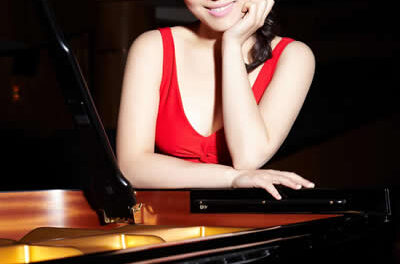Folks who cite graying audiences and the preponderance of biddies and geezers at classical concerts —the author of this review is a card-holding member of the Association of Certified Geezers —may find encouragement among the many young artists and ensembles that continue to refresh from within the art we love. One such group is the Rossetti String Quartet, which made its area debut on November 13 in a Reynolds Industries Theatre concert presented by the Chamber Arts Society. The program itself included a breath of fresh air in the form of a new (2002) quartet by John Harbison, best known as the composer of The Great Gatsby (the Prelude to which has been played here by the UNCSO and the GSO), sandwiched by Haydn and Schumann. Although the resulting Ruben didn’t exactly go down easily for some members of the packed house, the placement of the new work was fairly typical —if you must do ’em, our friends in arts marketing say,. there’s no need to put ’em in the second half, unless you want to lose your audience at intermission… —and it must be said that the foursome made a very strong case for the new score.
The program began with Haydn’s Quartet in g minor, Op. 20/3 (H.III:33). We’ve heard lots of Haydn here, thanks to the Ciompi Quartet and many other ensembles. Papa H’s music is often selected as a curtain raiser for string quartet programs, since in effect he established the form —as the fine program notes by our colleagues Joe and Elizabeth Kahn (WordPros, Inc.) reminded us. The quartets of Op. 20 are special because they marked the master’s move to more “democratic” treatment of the four voices, and on this occasion those voices emerged with far greater clarity than usual, due in part to the Rossetti’s remarkable —and remarkably old-fashioned —seating. For the Haydn (and the rest of the concert, too), the arrangement, from left to right, was: 1st violin, cello, viola, and 2nd violin. This was the standard seating of several great orchestras of bygone days, including the NBC Symphony, and it’s a matter of record that the NBC’s stick-waver, Arturo Toscanini, was no hidebound slouch…. The arrangement did several things that benefited the audience’s perception of the sound —it split the violins, so their separate parts were significantly clearer. It put the lower voices in positions that allowed their harder-to-project tones to make maximum impact. And it concurrently lumped the two “middle voices” together, so on the (generally rare) occasions when they spoke on their own, they did so from positions of strength. All told, then, the seating had a great deal going for it —and it helped not only the Haydn, for whose music divided (as opposed to massed) violins are almost always beneficial (as the NCS’ Grant Llewellyn convincingly demonstrated in his debut-as-MD concerts and their subsequent broadcasts), but also the Harbison and the Schumann, too.
The Rossetti’s Haydn was more refined and delicate than the robust playing espoused by Duke’s Ciompi Quartet, but it worked well on this occasion. The light approach permitted many subtle nuances to emerge clearly. There was more of the same in the encore, wherein the visiting artists returned to the point at which they began, playing the sublime slow movement of Op. 20/5 (H.III:35). By that time, the Rossettis had the crowd eating out of their hands, as it were, and the response was as enthusiastic as we can recall at a Chamber Arts program —surely this ensemble will be invited back to NC soon.
After the Haydn came the Harbison, which was written for the Orion String Quartet. It is a very dramatic work that centers for the most part on dialogues between the first violin —Timothy Fain —and the cello —Eric Gaenslen. In this regard, it’s something of a throw-back to pre-Op. 20 chamber music, which tended to be dominated by the principal fiddler, often supplemented by bass underpinnings, figured or not. But this is a modern score, and it often suggested Schoenberg, of “Transfigured Night” fame, in both musical language and theatricality (so it was, perhaps inadvertently, a fine warm-up for next week’s Milestones concerts, being offered at Duke and UNC). The contrast with the Haydn could not have been more pronounced, despite the common tempo indications of the two middle movements of both works. Harbison’s piece is nonetheless a real quartet —the middle voices, provided by violinist Henry Gronnier and violist Thomas Diener, did get a few words in, sometimes edgewise, during the 20 minutes or so the performance consumed. Some in attendance grumbled that sitting through it was “an ordeal,” but it’s far less knotty than some much-celebrated works that have taken years to establish footholds with the public —Bartók’s canon, for example —and the reactions were generally not negative so much as “Golly, I think I need to hear that again, before I can decide if I like it….”
In the second half of the concert, Schumann’s Quartet in F, Op. 41/2, one of three dedicated to Mendelssohn, made a tremendous impression. The seating helped clarify textures that, on other occasions, have seemed as murky and turgid as Brahms, when played by old-style German instrumentalists with Kapellmeisters at the helm, and the individual and ensemble playing was incisive and committed in ways that more senior quartets don’t invariably project. The Rossettis are at the start of their work together, and they convey a palpable joie de vivre that draws in the listeners, some of whom sat on the edges of their seats, as the artists did (but few of whom were as wildly animated about things as Fain). The Schumann told its tale and often glowed from within, and it was good. (For the record, the final repeat in the last movement was omitted.)











